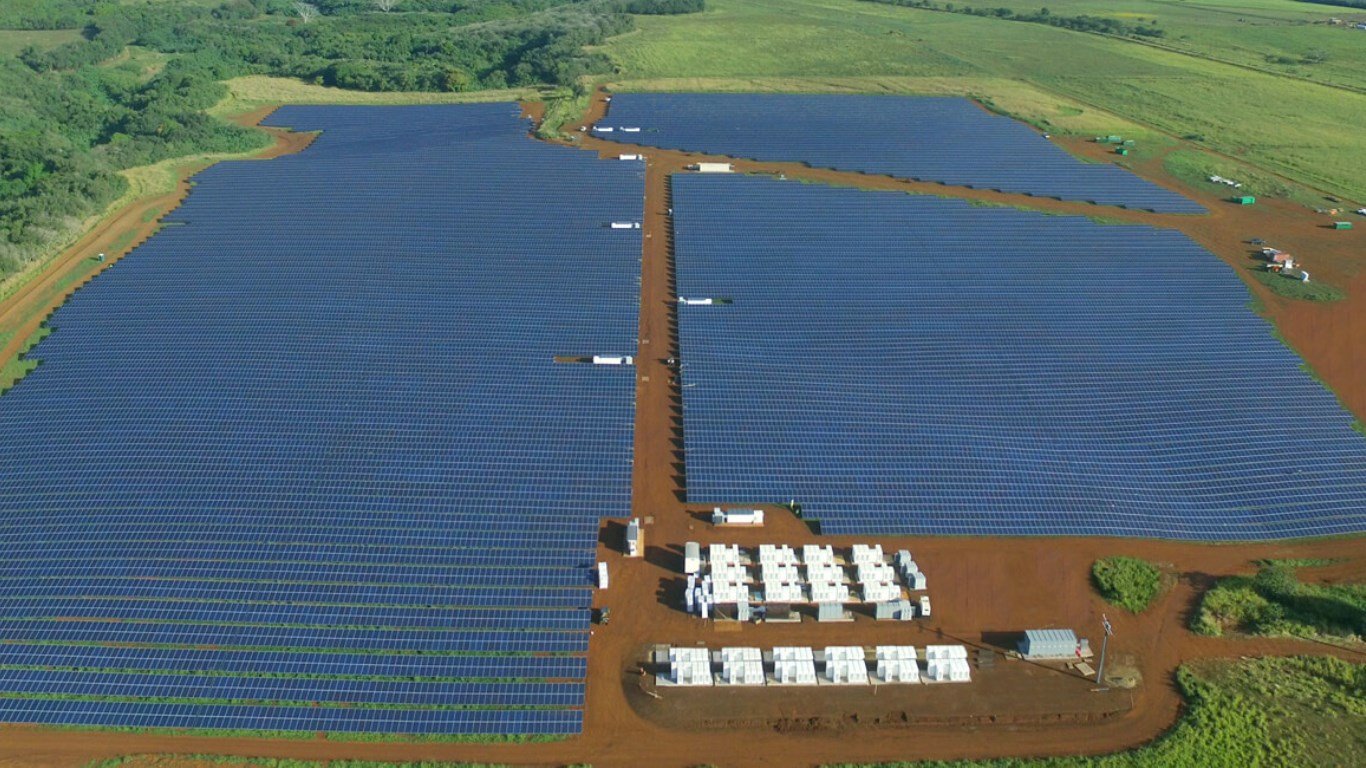Cars and Drivers
Tesla's in Trouble but Don't Panic -- Yet

Published:
Last Updated:

In a worst-case scenario for electric vehicle maker Tesla Inc. (NYSE: TSLA), analysts at Morgan Stanley on Tuesday said that the company’s stock price could plummet to $10 a share. Wedbush analyst Dan Ives said on Sunday that Tesla faced a “Herculean task” in reaching its delivery goal of 360,000 to 400,000 new vehicles in 2019. Late Tuesday, Citigroup analyst Itay Michaeli said Tesla stock could plunge to $36 a share.
While Tesla’s automotive business provided $18.5 billion of its 2018 revenues, the company’s energy and services businesses contributed $2.94 billion, or about 13.7% of total revenues. Those two businesses contributed $816 million of Tesla’s $4.54 billion first-quarter 2019 revenues, or about 18% of total revenues.
The company’s energy storage could be doing better, though. In the first quarter, storage revenues fell by 13% compared with the preceding quarter, and capacity installations fell from 73 megawatts (MW) to 47 MW. Services revenues fell by 7% quarter over quarter, which the company attributed to a drop in used car sales that flowed from lower-than-expected deliveries of new vehicles.
The potential for Tesla’s energy storage business may not be as great as the potential for its electric vehicles, but the company has demonstrated that indeed it does have a storage product that works. In a well-publicized 2017 project in Australia, company CEO Elon Musk promised to install a 100 megawatt-hour (MWh) battery storage system within 100 days from the contract award or Australia would not have pay for it. The results were remarkable.
Without a storage system for renewably generated electricity, it will be virtually impossible to reach a goal of 100% renewable generation without massive (and massively costly) overbuilding renewable energy projects and transportation grids. Being able to store renewable power, though expensive, is less expensive than building more wind and solar farms.
Battery storage for electricity generated from wind and solar power are a key part of mitigating climate change. The World Bank is hosting a conference next month in Singapore to focus on financing for projects that use battery storage. According to the bank, global demand for battery storage is expected to reach 2,800 gigawatt-hours (GWh) by 2040, an amount equal to more than half of all the energy currently generated globally from renewable sources.
Last year the bank committed $1 billion to global battery storage program that aims to raise an additional $4 billion in private and public funds to finance 17.5 GWh of new battery storage in developing and middle-income countries by 2025. That’s more than three times the current installed capacity in the world’s developed countries. World Bank Group President Jim Yong Kim said, “Batteries are critical to decarbonizing the world’s power systems. They allow us to store wind and solar energy and deploy it when it’s needed most to provide people with clean, affordable, round-the-clock power.”
Last November BloombergNEF (BNEF), a clean energy research firm, estimated that large-scale energy storage will attract $620 billion in investments by 2040. BNEF also forecast that storage prices will drop by more than half between 2018 and 2030 and storage capacity will reach a global total of 924 GW by 2040.
That $620 billion investment depends largely on governments’ willingness to penalize fossil fuel producers (with carbon taxes, among other things) and encourage renewable energy producers with subsidies and tax breaks. Pretty much a role reversal of what is happening currently in the United States and most of the rest of the world.
In an International Monetary Fund (IMF) working paper published earlier this month, global subsidies for the fossil fuel industry totaled $4.7 trillion in 2015 and were forecast to total $5.2 trillion in 2015. China ($1.4 trillion), the United States ($649 billion) and Russia ($551 billion) accounted for more than half of the 2015 subsidies. Note that the IMF has a fairly expansive definition of what a subsidy is.
Tesla has to step up its game, though, if it wants to dominate the energy storage market. Since the company’s 2016 acquisition of SolarCity for around $2.6 billion in Tesla stock and the assumption of $3 billion in SolarCity debt, Tesla’s share of the residential solar market has dropped from about 33.5% to around 9.0%, according to analysts at Wood Mackenzie cited by GTM Research.
The market for renewable storage probably won’t get into high gear until national and local governments begin to tax carbon and pour some money into building more energy storage systems. Tesla has a jump here, but the business is not growing and, in fact, may not be able to grow as long as the company’s automotive business continues to disappoint investors.
Note that short sellers have been keeping a close eye on solar and alternative energy stocks and that Tesla does make some of America’s most eco-friendly vehicles.
Thank you for reading! Have some feedback for us?
Contact the 24/7 Wall St. editorial team.